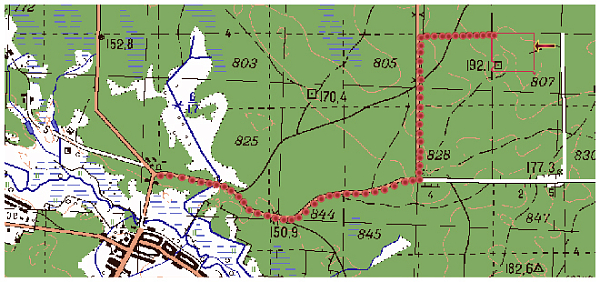The total length is 2.1 km
The ecological path "Reserved Oak Forest" goes through the habitat of the durmast oak, listed in Red Book of our republic. This type of oak is widespread, mainly in the mountains of Central Europe, and in Belarus it is found only on the territory of Belovezhskaya Pushcha on the area of about 1 thousand hectares. The durmast oak is almost equal in size and longevity to the pedunculate oak and is distinguished from it by barque covered with smaller cracks, leaves with longer leafstalks and cuneal base, and also acorns with very short peduncles – that’s the reason why it is sometimes called sessile oak.
The forest stands with a considerable amount of durmast oak trees are included in the zone of the strictest protection regime. The ecological path allows you to get acquainted not only with plantations of this rare tree species, but also with other plant formations of deciduous and coniferous forests of Belovezhskaya Pushcha, plants and animals typical for them, to observe the processes and phenomena occurring in wildlife. The length of the ecological path is about 2.5 km.
Along the path there are the objects connected with the historical past and the development of this region: the place potash firing, the hunting stands installed in the places where eminent people who visited the forest hunted, springlets where travelers and tenants of the forest could quench their thirst, as well as interesting plants: collared pines, giant pines, the oak, whose trunk consists of three inosculated trunks, etc.
Almost throughout the entire vegetation period, under the canopy of oak and horn beech trees, shade prevails. Therefore, understory plants have to adapt to specific habitat conditions. Some of them blossom in the early spring period and yield fruit until the full leafing of the tree layer. These are ephemeroids, i.e. plants with a short period of vegetation, the aerial portion of which dies by early to mid-summer. Other plants developed the ability to form seeds without pollination, or self-pollination, vegetative reproduction, etc.
By the end of the summer there are various kinds of mushrooms, including those listed in the Red Book. You can see a variety of fungi on trees, sometimes they reach huge sizes. In the forest you can come across the following wild animals: wild boars, deer, bison, and raccoons. Near the water holes you are sure to find traces of their presence: hoofs and paws prints, rutting pits and hackles of wild boars, which are their favorite places to get rid of parasites by removing them from the body with mud.
Among the feathered inhabitants of the forest, there are various species of cavity nesters: woodpeckers, tawny owls, nuthatches, old trees with hollows provide secure hiding place for their nests, birds of prey - buzzards, honey hawks, etc.





